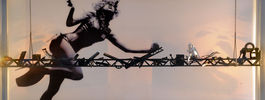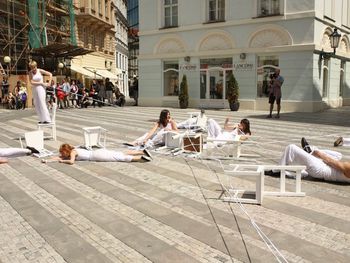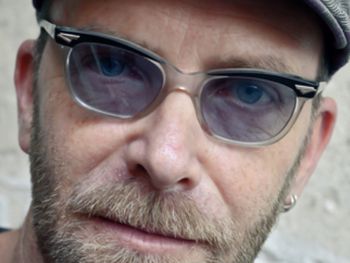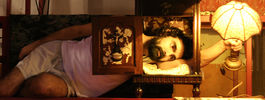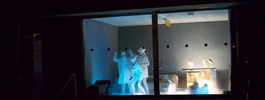

2007 » Sweden » Architecture section
| Curator: | Per Almqvist, Per Almqvist |
| Authors of Theme: | Torsten Nobling, Torsten Nobling |
| Designer / Architect of exhibition: | Torsten Nobling |
| Institution: | STTF, The Swedish Centre of OISTAT |
Stages in schools for education of theatre professionals
Most city’s in Sweden have established theatres with employed staff, as, in principle, all theatres are subsidised by the state or the local city council. One of the consequences of reduced financing to cultural facilities during the past years is that new theatres are seldom built. The existing theatres are renovated to keep up to modern standards and to meet new safety regulations. However, during the last years several theatre schools have increased their activity, creating more demands for modern spaces for performance training. Nearly all schools for professional training have new or renovated performance facilities. The architecture exhibition for PQ07 displays four of these theatres built in Sweden. Two stages are new and two stages are built in converted buildings. One shared characteristic of these facilities is that they must be adaptable for a variety of performances. Different configurations of seating and stage area are a common demand. Common for all these stages is that they do not have full height stage towers. Side spaces and good storage areas are also rare. Even though most schools have similar problems, it is of interest that the solutions are often vastly different. These solutions bear witness of the people involved in the process of designing: the schools, staff and the hired consultants. Another determining factor is the amount of money spent on the various projects. The latter is also a decisive for the quality and quantity of the technical equipment invested in each. Most schools could only afford to invest in the minimum of stage, light and sound equipment required. Any additional equipment needed must be rented; a condition that certainly affects the design decisions. Another similarity between these facilities is that no workshops are built in connection to the stages. Subsequently, sets are often manufactured on the stage. The exhibition displays the different stages in plans and sections drawn in similar scale to make it possible to compare them. The photographs show the differences in character and expression of the stages and their connected areas.
